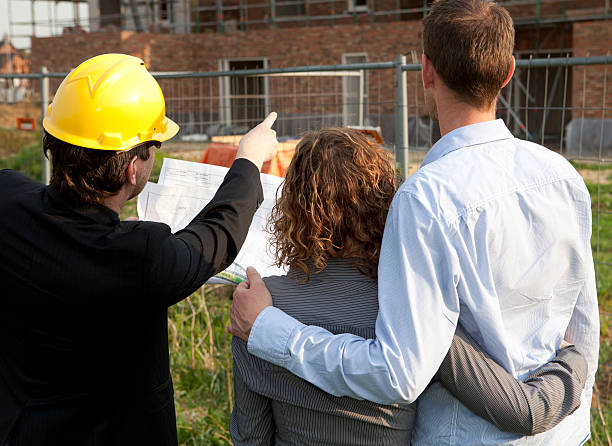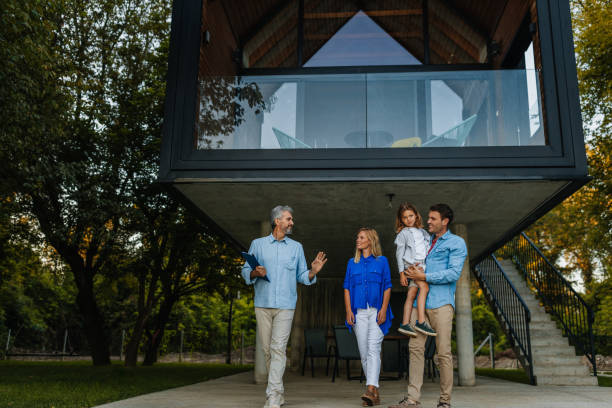ADU Permitting in Los Angeles: New Rules for 2025
Accessory Dwelling Units (ADUs) have become one of the most practical ways to address Los Angeles’ housing shortage. By 2025, new rules related to ADU permitting in Los Angeles are reshaping how homeowners, investors, and developers approach ADU projects.
Table of Contents
ToggleIf you’re a property owner, you’re likely asking:
What’s different about the ADU permit process this year?
How can I get approvals faster?
What do the new rules mean for my project budget or rental income?
At JDJ Consulting Group, we help clients navigate these exact questions every day. From feasibility studies to complete permit expediting, our team ensures your ADU project moves forward without delays. Let’s break down what has changed for 2025 and why it matters.
Why ADUs Matter in 2025 – The Big Picture
Los Angeles continues to face one of the most serious housing shortages in the country. Rising home prices, high rents, and limited land for large developments make ADUs a vital part of the solution.
In 2025, California updated its ADU laws once again. These rules give property owners more flexibility, shorter approval timelines, and in some cases, reduced costs. That means building an ADU in Los Angeles is not only easier—it’s also more profitable and sustainable.

Here’s why ADUs stand out this year:
Housing affordability: ADUs provide rental options at lower cost than new apartments.
Flexibility: They can serve as rentals, in-law suites, home offices, or guest houses.
Faster permitting: New laws push cities like LA to process permits more quickly.
Investment value: Adding an ADU increases property value and potential income.
Table 1: Why ADUs Are a Priority in 2025
| Reason | Impact for Homeowners & Investors |
|---|---|
| Housing Shortage Relief | Creates more units without new land |
| Rental Income | Generates steady cash flow |
| Property Value Boost | Higher resale and appraisal values |
| Flexible Use | Rental, family unit, or workspace |
| Sustainability | Supports denser, eco-friendly housing |
For homeowners and developers, this means ADUs are no longer a niche option—they are a mainstream investment tool.
📝 Quick Quiz: Test Your ADU Knowledge
Question: Do you need extra parking if your property is within 0.5 miles of public transit?
🚀 Ready to Start Your ADU Project?
Let JDJ Consulting Group handle zoning analysis, permits, and approvals so you can focus on your vision. We simplify ADU permitting in Los Angeles and save you time.
📞 Get a Free Consultation2025 – What’s New in ADU Permitting Laws
Every year, California adjusts ADU rules to make them easier to build. In 2025, several new laws came into effect that directly impact Los Angeles homeowners and developers.
Key Statewide Changes
Faster approvals: Cities must review most ADU applications within 60 days.
Pre-approved plans: Local agencies now offer standard ADU designs that speed up permitting.
More units allowed: Depending on lot size, you can build multiple ADUs—including detached and junior units (JADUs).
Tax benefits: A new property tax exemption (up to 15 years in some cases) helps owners save money.
Rental rules: Many ADUs built after 2025 will be exempt from rent control for at least 15 years.
Local Los Angeles Updates
Los Angeles updated its zoning code and permitting process to align with state rules:
Setback requirements have been reduced.
Parking rules are more flexible, especially near transit.
Online permitting through LADBS is now standard.
Ministerial approvals (no public hearings) make the process faster and more predictable.
Table 2: Comparing ADU Permitting – Before vs. 2025
| Category | Before 2025 Rules | 2025 Rules (Current) |
|---|---|---|
| Approval Timeline | 90–120 days or more | 60 days max |
| Number of Units Allowed | Typically 1 per lot | Multiple (ADU + JADUs) |
| Parking Requirements | Often 1 space per unit | Reduced/waived near transit |
| Design Review | Full plan check | Pre-approved plans available |
| Rent Control | Immediate coverage in LA | 15-year exemption for new units |
These updates mean less red tape and more opportunity. At JDJ Consulting Group, we guide clients through these rule changes to ensure no detail is missed—and permits move forward quickly.
Permitting Process & Timeline in LA – Today vs. 2025
One of the biggest frustrations property owners faced in Los Angeles was the time it took to get an ADU permit. In many cases, approvals stretched over 6–12 months. By the time construction started, costs had gone up, financing terms changed, and project timelines were already behind schedule.
The new 2025 rules change that. For most ADU projects, Los Angeles is now required to review applications in 60 days or less. Combined with pre-approved design options and online submissions, the process is finally catching up to the demand.
At JDJ Consulting Group, we help clients cut through each step of this process. Our role is to make sure applications are complete, zoning requirements are met, and submittals are tracked so nothing stalls your project.

How the ADU Permit Process Works in Los Angeles (2025)
Here’s what a typical project looks like under the updated permitting system:
Feasibility Review
We check if your lot qualifies for ADUs under city and state rules.
This includes setbacks, height limits, parking availability, and fire safety zones.
Design & Pre-Approved Plan Selection
You can choose from city-issued pre-approved ADU designs, or we can help prepare custom drawings.
Pre-approved plans save weeks of review time.
Application & Submittal
All applications go through LADBS PermitLA (the city’s online platform).
JDJ ensures forms, site plans, and utility connections are included to avoid resubmittals.
Plan Check & Approvals
Under new law, the city has 60 days to respond.
Minor corrections may be requested, but most projects avoid public hearings.
Permits Issued & Inspections
Once approved, permits are released, and construction can begin.
JDJ coordinates inspections to make sure progress isn’t delayed.
What Changed Between Pre-2025 and Now?
Before these updates, applicants often ran into repeat plan check corrections and unpredictable delays. Now, with standardized review timelines and objective design criteria, the process is far more predictable.
Here’s a breakdown of how things look today compared to just a few years ago:
| Step | Before 2025 | After 2025 Updates |
|---|---|---|
| Application Submittal | Paper or in-person | Fully online via LADBS |
| Plan Check Timeline | 3–6 months, often longer | 60 days required by law |
| Design Approval | Case-by-case review | Pre-approved designs allowed |
| Parking Requirement | 1 space per ADU | Often waived near transit |
| Public Hearing Risk | Possible in certain zones | No hearings (ministerial) |
Why JDJ’s Role Matters in the 2025 Process
Even though rules have become simpler on paper, many property owners still run into delays because of:
Incomplete applications (missing site plans, fire department sign-offs).
Utility coordination issues (water, sewer, or electrical upgrades).
Zoning misunderstandings (especially in hillside or coastal zones).
This is where JDJ Consulting Group steps in:
We prepare feasibility reports before you spend money on design.
We coordinate with LADBS and utility providers to prevent delays.
We track submissions daily to make sure the city sticks to its 60-day timeline.
For homeowners, this means a smoother process. For investors, it means projects get to the income-generating stage faster.
Financial & Regulatory Advantages for Homeowners
Building an ADU is not just about adding extra living space. In 2025, the financial and regulatory benefits are stronger than ever for Los Angeles property owners. From rent control exemptions to tax breaks and rising property values, ADUs can quickly shift from being an expense to becoming one of the smartest investments you can make.

At JDJ Consulting Group, we help clients understand the numbers before they break ground. That means mapping out construction costs, analyzing return on investment, and planning for long-term compliance.
Rent Control & Eviction Exemptions
One of the biggest benefits in 2025 is how ADUs interact with Los Angeles’ Rent Stabilization Ordinance (RSO).
ADUs built after 1978 are exempt from RSO for 30 years.
Units constructed under the 2025 rules can be rented at market rate, without rent caps, for at least 15 years.
Landlords also have more flexible eviction options compared to older units.
This gives property owners more control over pricing, tenant turnover, and overall rental income.
Example: A two-bedroom ADU in East LA might rent for $2,400/month in 2025. Because it’s exempt from RSO, the owner can adjust rent annually based on market demand—not a city-mandated limit.
Cost Estimates & Financing Options
Building an ADU requires upfront investment, but with new laws, the payback period is shorter than ever.
Typical ADU costs in Los Angeles (2025):
| ADU Type | Estimated Cost Range | Timeline to Build |
|---|---|---|
| Garage Conversion | $120,000 – $160,000 | 3–6 months |
| Detached One-Bedroom Unit | $180,000 – $250,000 | 6–9 months |
| Two-Bedroom Custom Detached ADU | $250,000 – $350,000 | 9–12 months |
| Prefabricated/Modular ADU | $130,000 – $200,000 | 4–6 months |
Financing Options in 2025:
Home Equity Loans: Low interest rates, tied to property value.
ADU-Specific Loan Programs: Several California lenders now offer products designed for ADU construction.
Cash-Out Refinance: Rolling ADU costs into a new mortgage.
Grants & Incentives: Limited programs available for low-income homeowners or those adding affordable units.
At JDJ Consulting Group, we provide clients with cost-benefit reports so they know exactly how an ADU will impact both short-term financing and long-term property value.
Rising Property Value & Long-Term Payoff
Adding an ADU almost always increases a property’s appraised value. In competitive LA neighborhoods, this boost can be substantial.
Studies show ADUs can raise property values by 20–30%.
A rental-producing ADU improves cash flow, which strengthens appraisal numbers.
Homes with ADUs often sell faster and above asking price compared to similar properties without them.
Example: A single-family home in Highland Park valued at $950,000 may appraise at $1.15M after adding a well-designed ADU, even before factoring in rental income.
For homeowners, this means more equity. For investors, it’s an opportunity to scale rental portfolios with built-in appreciation.
Why JDJ Consulting’s Guidance Matters
Even with all these financial advantages, mistakes during permitting or construction can erase profits. Overbuilding, missing zoning limits, or triggering unintended rent control can cost owners thousands.
That’s why JDJ Consulting Group provides:
ROI analysis before construction begins
Compliance checks to protect rent control exemptions
Permit acceleration to shorten timelines and start earning income faster
In short: We make sure your ADU isn’t just buildable—it’s profitable.
Common Challenges & How JDJ Consulting Group Helps
Even though 2025 laws have simplified the ADU process, many property owners still hit unexpected roadblocks. These delays can turn what should be a 6–9 month project into a frustrating, costly experience.
At JDJ Consulting Group, we’ve seen these issues play out across hundreds of ADU projects. The good news? With the right planning, most of them can be avoided.

Design, Zoning & HOA Restrictions
Los Angeles zoning laws now allow more ADUs than before, but design standards still apply. Certain neighborhoods, especially hillside and historic districts, enforce stricter rules on size, height, or exterior finishes.
Homeowners Associations (HOAs) also try to restrict ADUs—even though California law prevents them from outright banning them. They may push back on design, parking, or aesthetics.
How JDJ Helps:
We prepare feasibility studies to flag zoning or HOA concerns before design work starts.
Our team works with architects to create ADU designs that meet city requirements and neighborhood expectations.
We help clients respond to HOA objections while staying within California law.
Compliance & Enforcement Risks
California’s Housing and Community Development Department (HCD) now has enforcement authority. This means if a city, or even a property owner, fails to follow ADU rules, HCD can step in with fines or order changes.
Risks include:
Building an ADU that doesn’t meet updated standards.
Renting an ADU in a way that violates local codes.
Skipping permit steps, which can trigger penalties later.
How JDJ Helps:
We make sure every application meets objective standards.
We monitor law changes so clients don’t get blindsided by shifting rules.
We ensure units are built to code so owners stay protected long term.
Utility Approval Delays
Another common challenge is coordinating with utility providers. Many ADUs need sewer upgrades, new water lines, or electrical capacity increases. In some parts of LA, homeowners wait months for these connections.
How JDJ Helps:
We coordinate with LADWP and other utilities early in the process.
We prepare technical drawings that utilities require for faster approvals.
We plan for upgrades in advance, avoiding mid-project surprises.
Wildfire & Environmental Constraints
Some Los Angeles neighborhoods, especially hillside and canyon areas, fall under high fire severity zones. This can trigger stricter rules, like fire sprinklers, extra setbacks, or environmental reviews under CEQA (California Environmental Quality Act).
How JDJ Helps:
We analyze environmental and hazard maps before you apply.
We help secure exemptions when possible under new 2025 laws.
We design compliance strategies to keep projects moving, even in fire-prone zones.
Why These Challenges Matter for ROI
Every week of delay adds costs—loan interest, higher material prices, and lost rental income. For investors, delays also push back scaling plans.
That’s why JDJ Consulting Group focuses on:
Prevention (catching problems before they start)
Acceleration (keeping the city and utilities accountable to timelines)
Protection (ensuring ADUs comply with laws so your income is safe)
In short, we take the uncertainty out of ADU permitting.
💰 ADU Cost Estimator
*Estimates based on average Los Angeles ADU construction costs (HCD, 2024).
Why JDJ Consulting Group Is Your ADU Partner in 2025
Building an ADU in Los Angeles in 2025 comes with opportunities—but also with complexity. Between new state laws, shifting local codes, and technical utility requirements, it’s easy for homeowners or investors to get stuck. That’s where JDJ Consulting Group makes the difference.
We don’t just explain the rules—we guide projects from concept to completion. With deep experience in zoning, entitlements, permitting, and development consulting, our team helps clients avoid costly mistakes and accelerate results.
JDJ’s Core Strengths in ADU Development
Feasibility Expertise – Before you invest in drawings or contractors, we evaluate zoning, setbacks, parking, and hazard zones to confirm your property qualifies.
Permit Expediting – Our consultants handle LADBS submissions, track deadlines, and resolve corrections so you don’t face delays.
Design Strategy – We coordinate with architects to align ADU designs with both city standards and investor goals.
Utility Coordination – From water lines to electrical upgrades, we manage the technical approvals that often slow projects.
ROI & Market Insight – We provide reports on projected rental income, resale value, and payback timelines.
How JDJ Fits into the 2025 ADU Landscape
ADU permitting in Los Angeles is faster in 2025, but it’s still not automatic. Many homeowners find that incomplete applications, unclear design standards, or utility roadblocks keep them from hitting that 60-day approval mark.
JDJ Consulting Group bridges that gap by offering full-service support:
Analysis: We break down what the 2025 ADU laws mean for your property.
Planning: We prepare a clear roadmap, with cost and timeline estimates.
Execution: We manage the permit process so you can focus on financing or construction.
Follow-Through: We ensure compliance so your ADU stays profitable long after it’s built.
Why Clients Choose JDJ Consulting
Clients work with us because we:
Deliver faster results by keeping city departments accountable.
Protect profitability by aligning projects with rent control exemptions and tax benefits.
Reduce risk by navigating zoning, CEQA, and fire-safety restrictions.
Provide clarity in a process that’s often confusing for first-time builders.
Example: A JDJ client in the San Fernando Valley recently secured approval for a two-unit ADU project in just 54 days, thanks to pre-approved plan selection and proactive utility coordination. Without our involvement, that project could have easily stretched to six months or more.
Bottom Line
In 2025, ADUs in Los Angeles are no longer just an affordable housing solution—they’re a strategic investment. But success depends on navigating the permitting process with precision.
JDJ Consulting Group is the partner that ensures your ADU project is not only approved, but also profitable.
Looking Ahead – The Future of ADUs in Los Angeles
The 2025 updates are not the final word on ADUs. California continues to adjust housing policy every year, and Los Angeles is at the center of those changes. For homeowners and investors, this means new opportunities are still on the horizon—but so are new rules that could affect costs, approvals, and rental strategies.

At JDJ Consulting Group, we monitor these trends closely so our clients can stay ahead of the curve.
Policy Trends to Watch
Several bills introduced in California could expand ADU opportunities even further:
SB 1211: May allow up to eight detached ADUs on certain lots, creating multi-unit potential.
SB 1164: Offers a 15-year property tax exemption on new ADUs, reducing operating costs.
AB 1033: Opens the door for ADUs to be sold as condominiums, giving homeowners an exit strategy beyond renting.
CEQA Reform: Streamlined environmental reviews are making infill ADU projects easier, especially in urban neighborhoods.
These shifts could make ADUs even more attractive as long-term investments.
Market & Community Impacts
ADUs are reshaping how Los Angeles neighborhoods look and function. Instead of large new apartment complexes, many communities are seeing smaller, backyard-scale housing growth.
Key impacts in the coming years:
Higher Density: Single-family lots may house multiple units without changing neighborhood character.
Increased Affordability: More supply means more rental options across the city.
Flexible Living Models: Families can use ADUs as in-law suites, home offices, or short-term rentals (where permitted).
Property Value Trends: Homes with ADUs are expected to sell faster and at higher values compared to those without.
Investor Insight: As ADUs become more common, competition in the rental market will rise. Owners who focus on quality design, compliance, and fast approvals will stay ahead.
How JDJ Positions Clients for the Future
JDJ Consulting Group doesn’t just solve today’s permitting challenges—we help clients build long-term strategies. That means:
Planning for scalability if laws allow multiple ADUs per lot.
Structuring ADUs for both short-term cash flow and future resale value.
Staying on top of legislative changes so clients don’t miss out on tax breaks or new exemptions.
In short: JDJ prepares your project not just for 2025, but for the next decade of housing policy in Los Angeles.
Conclusion – Navigating ADU Permitting in Los Angeles with Confidence
ADUs have become one of the most powerful tools in Los Angeles housing. The 2025 rule changes make it easier than ever to add value to your property, generate rental income, and support family living needs. But with new laws come new complexities—different parking rules, stricter design standards, and updated approval pathways.
For homeowners, investors, and developers, this can feel overwhelming. That’s why working with an experienced team is critical.
At JDJ Consulting Group, we specialize in helping clients:
Navigate permits and zoning with confidence.
Avoid delays caused by incomplete applications or missed requirements.
Unlock investment potential by structuring ADUs to match your long-term goals.
Stay compliant with the most current Los Angeles and California housing laws.
Why Choose JDJ for Your ADU Project?
Unlike generic contractors or online guides, JDJ provides tailored consulting that goes beyond paperwork. We bring a deep understanding of Los Angeles development rules, local zoning nuances, and city-specific challenges.
Working with JDJ means:
A single point of contact for your project.
Streamlined communication with city agencies.
Clear strategies that balance compliance, design, and profitability.
Peace of mind knowing your project is built on solid planning.
Take the Next Step
If you’re thinking about adding an ADU in 2025, the best time to start planning is now. Early preparation gives you an edge—whether you want faster approvals, lower costs, or more flexible investment options.
Call JDJ Consulting Group today at (818) 793-5058 to schedule a free consultation and discover how our expertise can turn your ADU vision into reality.
Or visit jdj-consulting.com to learn more about our services and start your project today.
Your property has untapped potential. Let JDJ Consulting Group help you unlock it.
Lorem ipsum dolor sit amet, consectetur adipiscing elit. Ut elit tellus, luctus nec ullamcorper mattis, pulvinar dapibus leo.
📊 ADU Permits Approved in Los Angeles (2019–2024)
Source: California Department of Housing and Community Development (HCD), 2024
Frequently Asked Questions on ADU Permitting in Los Angeles (2025)
1. What are the new ADU permitting rules in Los Angeles for 2025?
The 2025 rules make ADUs easier to approve while tightening some design standards. Homeowners benefit from faster timelines and flexible parking rules.
Key changes include:
Streamlined approval for most single-family lots
Relaxed parking requirements near transit
More flexibility for garage conversions
2. How long does it take to get an ADU permit in Los Angeles?
On average, the approval process runs between 3 to 6 months, but the timeline depends on the complexity of your project.
Factors that affect timing:
Zoning and design compliance
Number of correction cycles with the city
Whether you use a consultant or apply on your own
3. How much does it cost to permit and build an ADU in Los Angeles?
Costs vary widely depending on size and finishes. Most homeowners spend between $150,000 and $400,000.
Typical cost breakdown:
Permit fees: $5,000 – $15,000
Design and engineering: $10,000 – $25,000
Construction: $120,000 – $350,000
4. Can I build an ADU on any residential property in Los Angeles?
Not every property qualifies. The city reviews zoning, lot size, and site conditions before approval.
General requirements include:
Residential zoning designation (R1, R2, etc.)
Sufficient lot size and setbacks
No conflicts with overlays such as historic districts or hillside zones
5. Do I need parking for an ADU in Los Angeles in 2025?
In most areas, you do not need additional parking, especially if your property is near public transit.
Exceptions where parking may be required:
Properties outside of half a mile from a bus or train stop
Garage conversions where no replacement parking is available
6. What types of ADUs are allowed under Los Angeles rules?
The city recognizes several ADU categories, giving homeowners multiple options:
Detached ADUs – separate backyard structures
Attached ADUs – additions to an existing house
Garage conversions – using an existing garage space
Junior ADUs (JADUs) – small units within the primary dwelling
7. Are there size limits for ADUs in Los Angeles?
Yes, size limits are based on type and property conditions.
Detached ADUs: up to 1,200 square feet
Attached ADUs: capped at 50% of the main home’s size
Junior ADUs: maximum of 500 square feet
8. Can I rent out my ADU in Los Angeles?
Yes, ADUs can be rented long-term, which makes them a great income source.
Important notes:
Long-term rentals are allowed (typically 30 days or more)
Short-term rentals like Airbnb are restricted unless approved under specific programs
9. Do ADUs increase property taxes in Los Angeles?
Adding an ADU does raise property taxes, but only on the new unit.
For example:
A $200,000 ADU may add around $2,000 per year
Your primary home’s existing assessed value remains unchanged
10. How do ADU permits interact with zoning laws in Los Angeles?
Zoning laws still apply, even with relaxed ADU rules.
Zoning rules cover:
Setbacks from property lines
Maximum building height
Fire safety in hillside or high-risk zones
11. What happens if I build an ADU without a permit in Los Angeles?
Unpermitted ADUs can lead to serious consequences.
Possible risks include:
Stop-work orders during construction
Fines and penalties from the city
Problems with refinancing or selling your property later
12. How can JDJ Consulting Group help with ADU permitting in Los Angeles?
Our team at JDJ Consulting Group specializes in simplifying the ADU process.
We assist with:
Zoning and site feasibility analysis
Permit expediting and plan submittals
Navigating city corrections and compliance
Ensuring approvals come faster and smoother
13. What types of Accessory Dwelling Units are allowed in Los Angeles?
Los Angeles recognizes several kinds of Accessory Dwelling Units. Each option has different requirements under state law and local ordinances. Common ADU types include:
Detached ADUs built as separate small homes
Attached ADUs added to an existing single-family home
Garage conversions turned into habitable space
Junior ADUs created within the footprint of the main house
14. How does state law affect ADU construction in Los Angeles?
California state law has changed how cities regulate ADUs. It reduces barriers and sets baseline rules. In Los Angeles, property owners must still follow:
Lot size and setback requirements under the ADU Ordinance
Parking requirements if not close to public transit
The permitting process with the Department of Building and Safety
Local standards found in the Los Angeles Municipal Code
15. Are fire sprinklers always required for an ADU?
Fire sprinklers are not always necessary. The need depends on building requirements and input from the Fire Department. Factors that affect the decision include:
Size of the ADU and number of units
Whether the project is a detached ADU or garage conversion
Existing safety features in the single-family home
16. Can I legally convert a garage into an ADU in Los Angeles?
Yes, garage conversions remain a popular choice. They often cost less than new construction but still require approval. The permitting process usually includes:
A garage conversion permit filed with the Department of Building and Safety
A plan check to ensure building and safety compliance
Review of floor plan, parking requirements, and lot size
Payment of building permit fees before construction starts
17. What role does the Department of Building and Safety play?
The Los Angeles Department of Building and Safety manages the ADU permitting process. Their duties include:
Reviewing the permit application and construction standards
Checking plans against setback requirements and zoning restrictions
Issuing approvals and the final Certificate of Occupancy
18. How do ADUs address the housing shortage in Los Angeles?
ADUs play a key role in reducing the housing shortage. They create more housing choices and can also support affordable housing. Benefits include:
Adding small independent living facilities such as granny flats
Offering affordable rental rates for tenants
Generating passive income for property owners
Helping families house relatives within the same single-family lot
19. What are the setback requirements for detached ADUs?
Detached ADUs must meet certain setbacks. In Los Angeles, the common standard is four feet from rear and side property lines. However, local governments may adjust rules depending on:
Lot size and zoning restrictions
Whether the unit is on a single-family home or multi-family dwelling
Fire safety and building requirements
20. Do ADUs in coastal areas require special permits?
Yes. If the property is in a coastal zone, additional steps apply. A coastal development permit may be needed along with the regular building permit. The California Coastal Commission and local governments consider:
Community impact on open space
Residential use near the shoreline
Site-specific zoning restrictions
21. Are unpermitted ADUs risky for property owners?
Yes. Unpermitted ADUs can create legal and financial risks. Without a proper permit application and Certificate of Occupancy, problems may include:
Fines or enforcement from the Department of Building and Safety
Higher permitting costs if legalization is required later
Loss of rental income since unpermitted ADUs are not legal for residential use
22. How do parking requirements affect ADU projects?
Parking rules depend on location and type of unit. In Los Angeles, state law has relaxed many parking requirements. In practice:
Units near public transit often need no extra parking
Garage conversions may replace required spaces in some cases
Detached ADUs on larger lots may need one parking space
Exemptions apply if the site meets state law conditions
🔄 ADU Permitting Process in Los Angeles (2025)
Error: Contact form not found.






